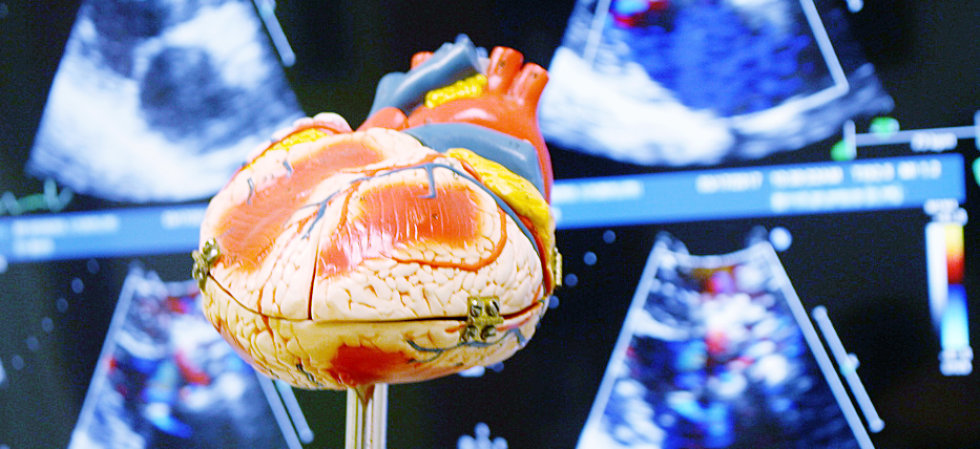Research Objectives
- Elucidate the mechanisms governing the initiation and progression of aortic stenosis and mitral regurgitation to design new pharmacological approaches and slow their progression.
- Validate and introduce new medical imaging methods into practice to improve the diagnosis and treatment of valvular heart diseases.
- Develop and validate new technologies and prostheses for the percutaneous replacement of the aortic valve and the mitral valve.
- Improve the performance and durability of prostheses used for valve replacement.
Our Ongoing Research Projects
- PROGRAM (Determinants of the Progression and Outcome of Mitral Regurgitation- NCT01835054) :
Mitral Regurgitation (MR) is one of the most frequent valve lesions, both in North America and in Europe, and its prevalence is increasing with the aging of the population. Organic Mitral Regurgitation (OMR) and Ischemic Mitral Regurgitation are the two main categories of MR. Organic or primary MR is caused by an anatomic alteration of the valvular or subvalvular mitral apparatus and refers to rheumatic MR and degenerative MR that includes mitral leaflet prolapse and flail leaflet.
In the past 20 years, degenerative MR has become, by far, the most frequent cause of severe MR leading to surgery in the Western world. However, the best current treatment for OMR remains uncertain and controversial. We have obtained preliminary data showing that OMR is a dynamic lesion. Hence, the echocardiographic evaluation of MR at rest, as generally performed during routine clinical exams, does not necessarily reflect the status of MR during a patient’s daily activities and thereby does not adequately assess the risk of rapid progression and poor outcome in these patients.
The objective of the PROGRAM study are : to identify the independent predictors of disease progression and outcome in patients with asymptomatic chronic OMR and to develop and validate novel imaging and circulating biomarkers to improve risk stratification and the therapeutic decision-making process in patients.
- PROGRESSA (Metabolic Determinants of the Progression of Aortic Stenosis- NCT01679431) :
As mentioned earlier, to date, there is no medical treatment that reduces the progression of aortic stenosis or the resulting adverse effects on myocardial remodeling and function.
The objectives of the PROGRESSA study are to elucidate the mechanisms involved in the pathogenesis of calcific aortic stenosis and to identify the metabolic factors that determine the progression of:
- Aortic valve calcification and stenosis
- Myocardial fibrosis and dysfunction
- Clinical outcomes and the prognosis of patients with this disease
The PROGRESSA study will contribute to identifying the key metabolic determinants of AS progression and will pave the way for the development of future non-surgical therapies for this disease. The results of this study would provide substantial support for the realization of randomized trials to test the efficacy of a lifestyle modification program or a new pharmacological treatment aimed at reducing visceral fat and associated metabolic abnormalities in the AS population. Furthermore, this study will contribute to the identification of novel blood and imaging biomarkers as predictors of rapid disease progression, which will help optimize risk stratification and determine the appropriate timing of aortic valve replacement in patients with aortic stenosis.
- TOPAS (Multicenter Prospective Study of Low-Flow Low-Gradient Aortic Stenosis- NCT01835028) :
A low-flow, low-gradient aortic stenosis can occur with either a reduced left ventricular ejection fraction (classical low-flow, low-gradient) or a preserved ejection fraction (paradoxical low-flow, low-gradient). Although classical low-flow, low-gradient aortic stenosis is recognized as an important clinical entity, the current ACC/AHA-ESC guidelines do not provide specific recommendations for the clinical management of these patients. Aortic stenosis, as described by our group, is characterized by more pronounced concentric remodeling of the left ventricle, with a smaller cavity size and restrictive physiology leading to impaired filling, followed by altered myocardial function and a low-flow state. Until recently, this entity was often misdiagnosed, leading to underestimation of the severity of aortic stenosis and inappropriate delays in aortic valve replacement surgery. The two main challenges in patients with classical or paradoxical low-flow, low-gradient aortic stenosis are distinguishing between truly severe stenosis and pseudo-severe stenosis and accurately quantifying the extent of myocardial insufficiency.
The objectives of the TOPAS study are : to develop and validate new parameters and biomarkers to improve the assessment of the severity of stenosis and myocardial insufficiency, as well as risk stratification and clinical decision-making in patients with low-flow, low-gradient aortic stenosis. Finally, this study aims to evaluate the impact of different therapeutic strategies on patient outcomes.
- TAVI-B :
TAVI (Transcatheter Aortic Valve Implantation) is a minimally invasive technique that allows for the implantation of a valve prosthesis without sternotomy and generally with minimal sedation. Initially developed for high-risk surgical patients who were not eligible for aortic valve replacement surgery, TAVI is increasingly used and is now performed on intermediate-risk surgical patients and recently on low-risk surgical patients. However, challenges and complications arising from this technique still need to be addressed (paravalvular leaks, pacemaker implantation, bioprosthesis degeneration, etc.).
The objective of the TAVI-B study (initiated in 2016) are : to identify new blood and imaging biomarkers to improve risk stratification and clinical follow-up for patients with severe symptomatic aortic stenosis who have undergone TAVI. Indeed, there is a subset of patients for whom the procedure may be futile, meaning their physical condition does not improve after the procedure or the TAVI does not enhance their life expectancy.

